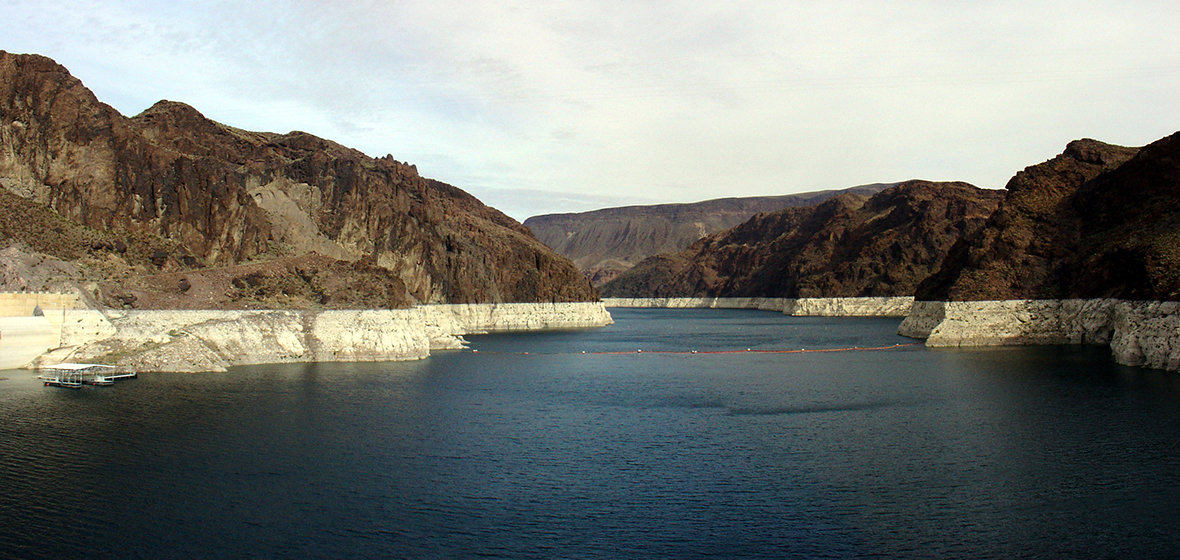Assistant Professor of Political Science in the College of Liberal Arts Elizabeth Koebele is researching policies and programs aimed at increasing water sustainability on the Colorado River. Most people might assume that Nevada doesn't have a seat at the table when it comes to these negotiations because we don't have much water to offer - but the State has a lot to gain and therefore is stepping up in collaborative ways to help protect the broader river system. Koebele recently published an article on the topic in Policy Studies Journal, which discusses three efforts to avert water crises on the Colorado River.
The Colorado River is a crucial water source for more than 40 million Americans across seven U.S. states including Nevada, as well as for residents of northern Mexico. In Nevada, the Colorado River provides 90 percent of the water supply for the southern part of the state. During the last two decades, however, the river's flow has been declining due to unprecedented drought. There have also been numerous controversies around southern Nevada's attempts to supplement their water supplies with water from other parts of the state. All of this has left many people wondering what the future holds.
Fighting over water rights is an age-old battle. Koebele often recalls a quote attributed to Mark Twain that says, "whiskey is for drinking [and] water is for fighting over." However, history doesn't always tell what the future holds. Koebele's research analyzes collaborative projects that the states in the West are working on to improve water sustainability in the Colorado River Basin.
"Collaboration has become an important strategy in environmental policymaking over the last few decades, particularly as climate change and population growth place additional stress on our already-limited natural resources," Koebele said.
"Nevada has long had great leadership in the realm of collaborative water policy," she continued. "In the Colorado River Basin, it's important to work together to make sure the river is sustainable rather than fighting over it."
One way Nevada has worked cooperatively with the region is through a program that provides water users with incentives to conserve water.
The Colorado River System Conservation Pilot Program pays water rights holders to not use their water. For example, a farmer with water rights might choose not to irrigate crops one year and can get paid to give up that water for the year. That water then goes back into the river and helps fill up reservoirs that have declined during the drought. The Southern Nevada Water Authority, along with water utilities in Arizona, Colorado and California, as well as the U.S. Bureau of Reclamation, have all helped to fund this particular program.
"Nevada doesn't always have rights holders who can give up water, but it's their priority to try to keep the reservoirs as full as possible, so they participate," Koebele said.
In addition, Koebele's research discusses how Mexico is also a partner in promoting water sustainability on the river system. The Colorado River flows through northern Mexico before draining into the Gulf of California. In recent decades, the U.S. has been temporarily storing some of Mexico's water in U.S. reservoirs, and the countries are also collaborating to restore the Colorado River's delta region. These efforts can help both countries and improve the environment at the same time.
Recently, the states in the Colorado River Basin have also created a "drought contingency plan," which was passed by Congress in April and is now headed to the President for final approval. Entities in all of the states, including Nevada, have voluntarily agreed to reduce water use in times of extreme drought to leave more water in reservoirs like Lake Mead. This can help protect the states against future water shortages. The plan outlines that under the first round of reductions, Nevada would give up the equivalent water usage of nearly 20,000 homes for one year.
Each of the seven states in the Colorado River Basin had the opportunity to decide how it wants to work on its own drought issues. It's important for the states to work on these plans individually because each state has its own set of unique water issues and ways to manage them. However, it's also important for the states to come together collaboratively and to consider the river system as a whole. This includes working with tribal stakeholders. Koebele said tribes are a major player in the Colorado River system because many of them have significant water rights, so it's important that they're involved in these collaborative sustainability projects.
"As we see more pressure from climate change, people are finding creative ways to work together and incentivize collaboration, and that's so important for figuring out how we keep water sustainable in the future," Koebele said.












